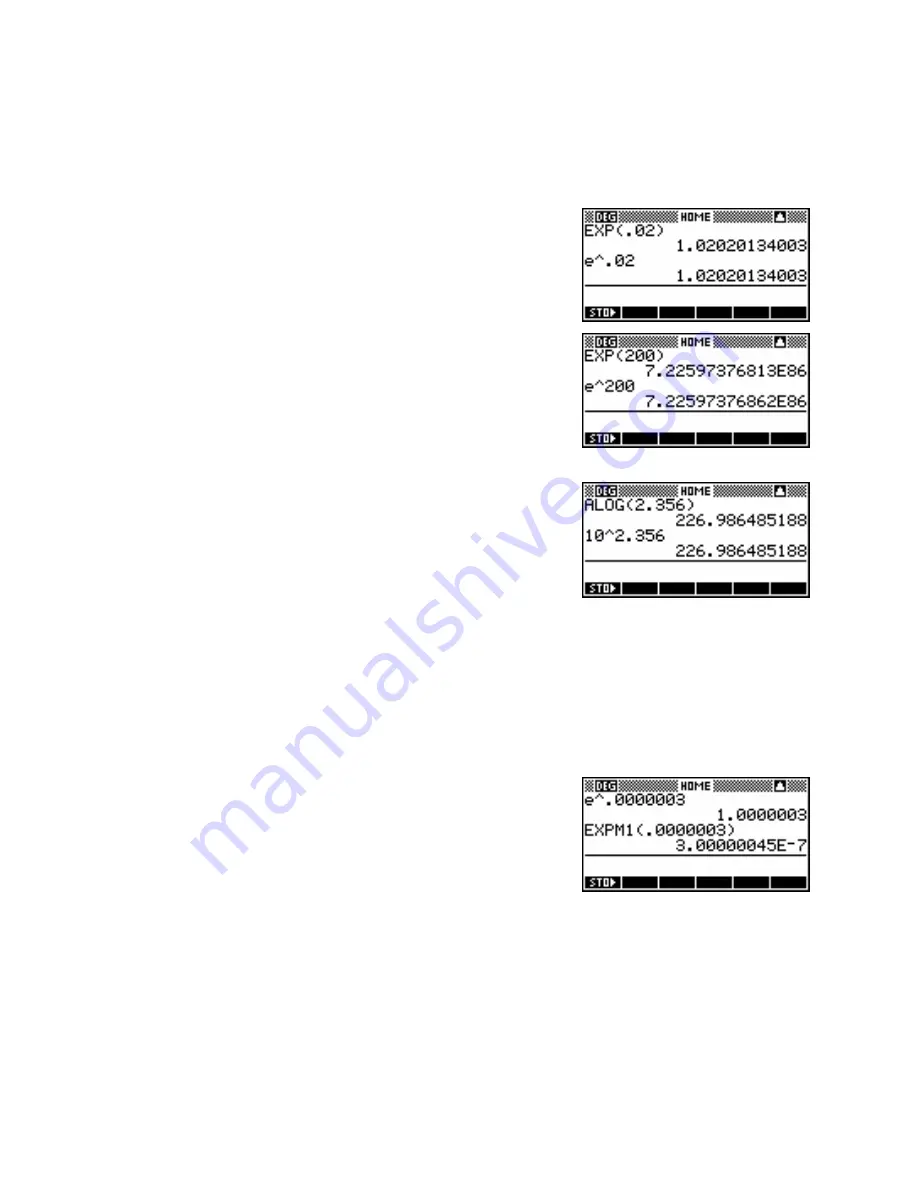
Some further functions are available in the Hyperbolic group of functions. They are duplicates of functions
available on the face of the calculator but give more accurate answers. They would primarily be of use to
those people, such as architects and engineers, for whom high accuracy is paramount. These are:
EXP(<num>)
This function gives a more accurate answer than the key labeled
e^
which appears above the
LN
key on the calculator. As you can see on
the right, the difference is normally not detectable even to 12 significant
figures.
The difference is only apparent for some values and even then is hardly
earth-shattering.
ALOG(<num>)
This function provides the same result as the key labeled
10^
on the
keyboard above the
LOG
key. It is another function giving greater
accuracy than the one it ‘replaces’. This greater accuracy would
probably never be required in a school setting.
EXPM1(<num>)
This function is designed to be more accurate when anti-logging very small values close to zero. It gives the
x
value not of
e
x
but of
e
−
1
(
EXPM1
= exp minus 1).
You may wonder how this is an advantage, since you
must then add 1 to obtain the correct answer, but a look at the screen opposite will show you.
As you can see, the normal keyboard function
e^
gives an answer to
0.0000003
e
of 1.0000003. This gives the impression that it is an exact
value (since it doesn’t show a full 12 significant digits). The true answer
is 1·000000300000045…. but the final digits have been lost in the
rounding off to 12 sig. figures.
x
By giving an answer of
e
−
1
, the leading 1 is lost, freeing the
calculator to show more accuracy by dropping the leading zeros. This is not normally be needed in the
classroom.
183






























